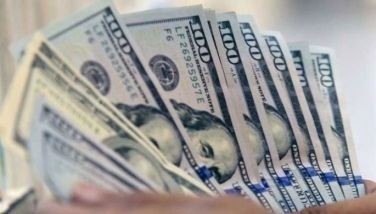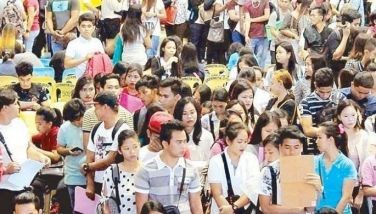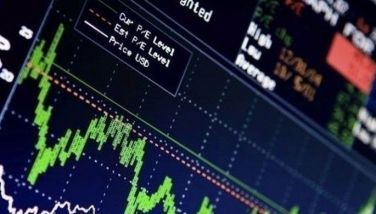The second SONA of President Marcos

President Marcos delivered his second State of the Nation Address (SONA) before the Joint Session of Congress yesterday that lasted one hour and 10 minutes in delivery.
First and second SONA. The first SONA was delivered during the first month of the President taking charge of the country. As such, it could only provide a presentation of his plans and programs and what he hoped to do.
The second SONA marks a period of one year of leadership experience for the President. He, therefore, has a track record of the first year of his presidency. Truly, therefore, the second SONA provides some imprint of the future he foresees under his leadership.
At the end of his SONA speech, the President concludes with a positive outlook and he says, “… in my heart, I know the state of the nation is sound, and is improving.”
In what follows, I select some highlights dealing with infrastructure projects that prominently project his hopeful vision for the country.
I devote a few words at the end of this column on the issue of sustainability and feasibility
Overall framework. The national budget allocates 70 percent of all expenditure on economic and social services. The top priority is expenditure on public infrastructure and in raising the capacity of our people—through food, education, health, jobs, and social protection.
To support these programs, the fiscal framework involves raising the tax and revenue efforts to increase to up to 16.9 percent and 17.3 percent by 2028.
Revenue generation has been improving. From January to May, the Bureau of Internal Revenue has posted record collections, amounting to P1.05 trillion, an increase of almost 10 percent over the last year. For its part, the Bureau of Customs has also increased its collection by 7.4 percent for the first seven months of 2023, amounting to P476 billion. Since July 2022, revenues have also increased from PAGCOR of 47.9 percent, and from the PCSO of 20 percent.
Transportation infrastructure. Our road network plans must link not only our three major islands, but all prospective sites of economic development.
The 1,200-kilometer Luzon Spine Expressway Network Program will effectively connect Ilocos to Bicol from 20 hours to just nine hours of travel.
Under the Mega-Bridge Program, 12 bridges totaling 90 kilometers will be constructed, connecting islands and areas separated by waters. The program includes the Bataan-Cavite Interlink Bridge and the Panay-Guimaras-Negros Island Bridges, each spanning 32 kilometers, and the Samal Island-Davao City Connector Bridge.
As of June this year, we have constructed, maintained, and upgraded more than 4,000 kilometers of roads and around 500 bridges across the country.
Several railway projects, with a total length of more than 1,000 kilometers, have been started. Notably, the southern leg of the North-South Commuter Railway System is now in full swing. In a few years, travel from Pampanga to Laguna will be reduced from four hours to just two hours.
Inter-modal connectivity of roads, bridges and mass transport systems will create access and passage to vital and bustling economic markets, such as agriculture hubs, tourism sites, and key business districts.
Energy. We have built eight new additional power plants. This brings to 17 the total number of power generation facilities that have been switched on across the country since last year, substantially increasing our energy production by 1,174 megawatts.
Renewable energy is the way forward. We are aggressively promoting renewables, so that it provides a 35 percent share in the power mix by 2030, and then up to 50 percent by 2040. To accelerate the realization of this green energy goal, we have opened renewable energy projects to foreign investments.
Since last year, an additional 126 renewable energy contracts with potential capacity of 31,000 megawatts have been awarded. To date, there are over a thousand active projects spread all over the country. 299 of these are solar; 187 are wind; 436 hydroelectric; 58 biomass; 36 geothermal; and nine are ocean-powered.
Maharlika Fund. In pooling a small fraction of the considerable, but underutilized government funds, the Maharlika Fund shall be used to make high-impact and profitable investments, such as the Build-Better-More program. The gains from the fund shall be reinvested for the country’s economic well-being.
To ensure sound financial management, a group of internationally recognized economic managers shall oversee the operations of the fund, guided by principles of transparency and accountability. This guarantees that investment decisions will be based on financial considerations alone, absent any political influence.
Prospective investments from presidential trips. We have embarked on foreign trips to promote the interests of the country, for peace-building, and for mutually beneficial purposes. Those economic missions have yielded an estimated total investment value of $71 billion or P3.9 trillion, with a potential to generate 175,000 jobs.
The implementation of recent economic reforms is underway. BOI-approved investment projects have reached P1.2 trillion during our first year, while other strategic investments approved for processing through the newly established “green lanes” amount to P230 billion.
Sustainability and feasibility. The Marcos administration acquired some level of flexibility by benefiting from economic reforms undertaken by the Duterte administration. These were the fiscal and investment reforms that streamlined revenue incomes and investment incentives. In addition, three laws that liberalized the entry of foreign capital in previously restricted areas in the last year of that government. This meant that the ultimate beneficiary was the incoming president.
The removal of the restrictive economic provisions of the Constitution is essential if the country hopes to simplify the “ease of doing business” in the country. Many restrictive provisions in the Constitution are the sources of red flags in economic regulations when foreign capital is involved.
The world we live in is full of uncertainties, some we can control as a nation and others, not.
Among those that we can control as a nation is how we deal with economic policy affecting all actors in the economy, foreign and local. It is high time we encourage foreign capital to stake their own risk capital earning their way in our country.
For archives of previous Crossroads essays, go to: https://www.philstar.com/authors/1336383/gerardo-p-sicat. Visit this site for more information, feedback and commentary: http://econ.upd.edu.ph/gpsicat/
- Latest
- Trending

























